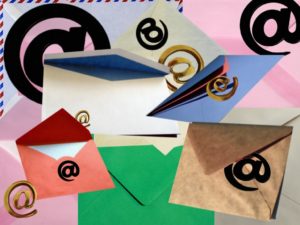The abundant inbox
I received 85 emails yesterday. Of those, 19 were marketing related. 14 were automated notifications. The rest I considered legitimate, need-to-be-dealt-with emails. Or were they? Taking a closer look, many were just messages where I was copied, needing no action on my part. Some were sent to a large distribution group I’m in, but didn’t require anything of me. Yet another bunch just contained information which I already had. In the end, only about 20 emails really needed my attention – but I had to read all the messages to determine which ones were important.
Techniques for managing your email
Email is a very useful tool, but it can also consume a large amount of time. The volume of information coming at us can be overwhelming, which can lead to important messages getting missed. Over the years I’ve developed techniques to help myself – and others – get the most from their email communication.
- When emailing, keep emails short. Brevity is important, and messages which are short and to the point are more productive than long rambles. The recipient needs to be able to quickly read the message, understand what’s needed from them, and create a response.
- Subject lines should reflect the content of the message. “Hi” is fine if you’re emailing grandma for cookies, but in formal business communication, “Need a plate of cookies” might be a better choice. If the subject changes substantially, then update the message subject line.
- Give your email a thorough look before sending. This helps to avoid sending anything you don’t want to send, sending to the wrong person accidentally (guilty of that one!) and to ensure that you have responded to what was expected. Stick to one topic per email. Several short messages are usually preferable to one long message covering many separate subjects.
- Don’t “reply all” every time. Often, the content of the message only needs the attention of one or two individuals. Although including everyone for informational purposes has its uses, consider who really needs it – and remove others from the message.
- Use carbon copy (cc) and blind carbon copy (bcc) respectfully. Limit cc´s only to those with a need to know. Watch cc’s when replying, and don’t continue to include people if the messages have become a two-way conversation. This really helps reduce clutter in other people’s inboxes.
- Never use email for urgent matters. If you need an immediate response, use phone or in person communication methods. While some people are glued to their computers and will respond right away, others may have different priorities or work habits.
- Don’t use email as an excuse to avoid personal contact. It may be more convenient, or it may avoid an uncomfortable situation, but face to face or phone calls are more appropriate in some cases.
- Use proper spelling, grammar and punctuation. Remember that recipients may include those whose culture, language, and humor have different points of reference from your own. Avoid sarcasm, as it’s difficult to detect the verbal nuances needed to convey it.
- Use a signature, and include your contact information. Your email may be forwarded to outside parties who might not know you. Having a signature with all your contact information helps identify who you are, and assists others who may need to contact you for more information. Most email programs have a way to automatically add a predefined signature to your email, for both new messages, forwards and replies.
- Remember tone can’t be heard in email, so construct your message with this in mind. Some people use emoticons to convey tone. While this is considered appropriate for some friendly business communication, it should be kept to a minimum and not used when trying to diffuse a situation.

Reader Interactions